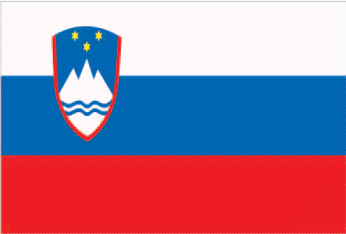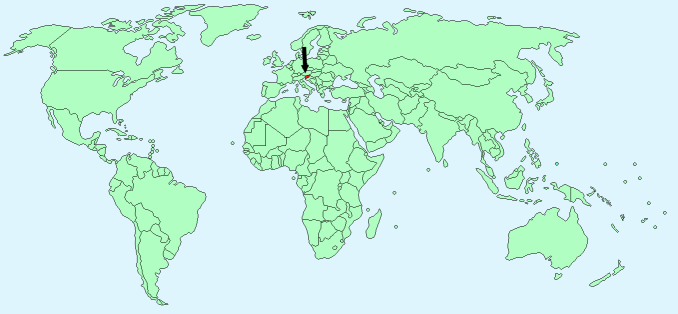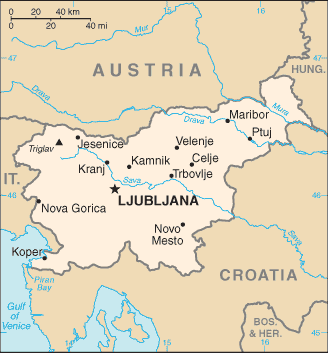Slovenia


Continent – Europe
Region – Central Europe
Size – 20,273 km²
Geography – mountains and valleys with coastal plain
Language – Slovenian, Serbo-Croatian, Hungarian, Italian
Religion – Roman Catholic 57.8%, Muslim 2.4%, Orthodox 2.3%, none 10.1%, other 27.4%
Monetary Unit – Euro
Natural Resources – lignite, lead, zinc, building stone, hydropower, wood
Agriculture – hops, wheat, coffee,, corn, apples, pears; cattle, sheep, poultry
Industry – ferrous metallurgy and aluminium products, lead and zinc smelting; electronics, trucks, automobiles, electric power equipment, wood products, textiles, chemicals, machine tools

Neighbouring Countries – Austria, Hungary, Croatia, Italy
Population – 1,983,412 (2015 estimate)
Population Growth Rate – -0.26%
Average Life Expectancy – 78.01
Capital City – Ljubljana (279,000 – 2015 estimate)
Highest Mountain – Triglav (2,864)
Longest River – Sava (990 km)
Climate – temperate, warm summers 12°C to 26°C and cold winters – -4°C to 12°C
Yearly Rainfall – 140 cm (approx)
Plant Life – larch, chestnut, pine, beech, fir, oak, conifers, alpine plants, primula, saxifraga, ferns, mosses
Animal Life – brown bear, wolf, lynx, deer, rabbit, wild boar, chamois, ibex, hare, badger, fox, pine marten
Bird Life – grouse, golden eagle, buzzard, hawk, white-tailed eagle, owls, woodpeckers
Harvard Reference for this page:
Heather Y Wheeler. (2016). Slovenia. Available: https://www.naturalhistoryonthenet.com/Facts_Figures/Country_Facts/slovenia.htm. Last accessed Tuesday, July 19, 2016
Facts and Figures Pages
